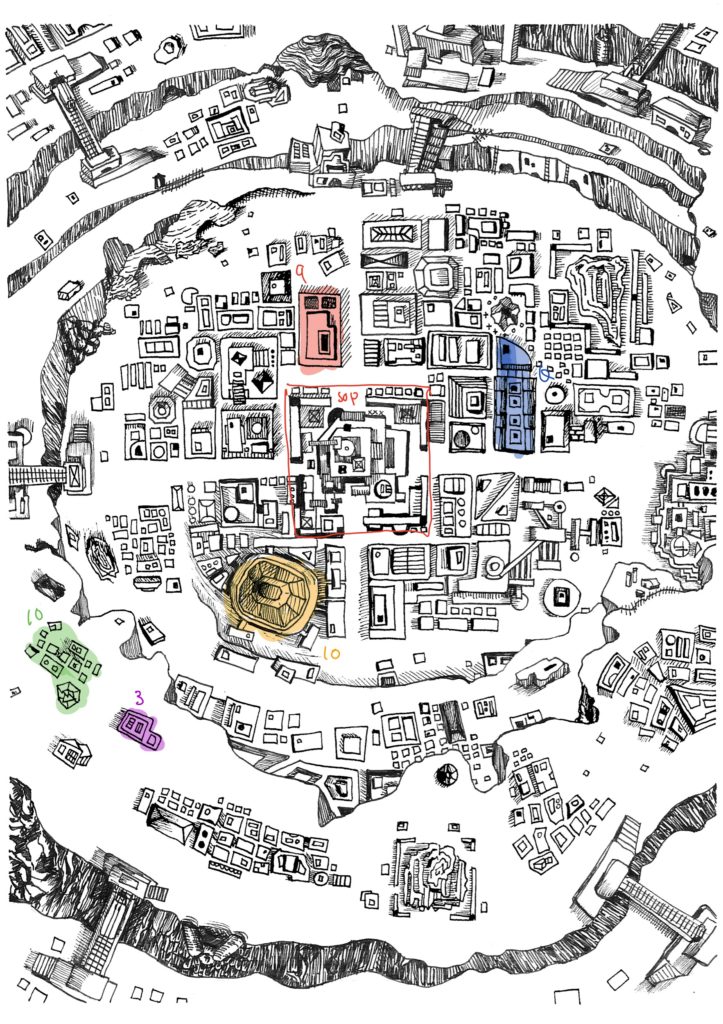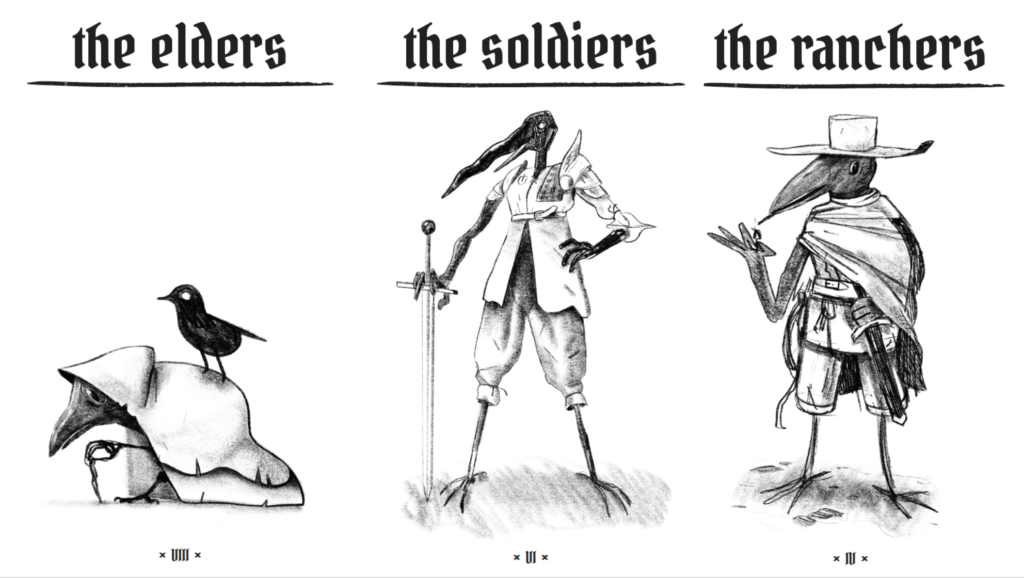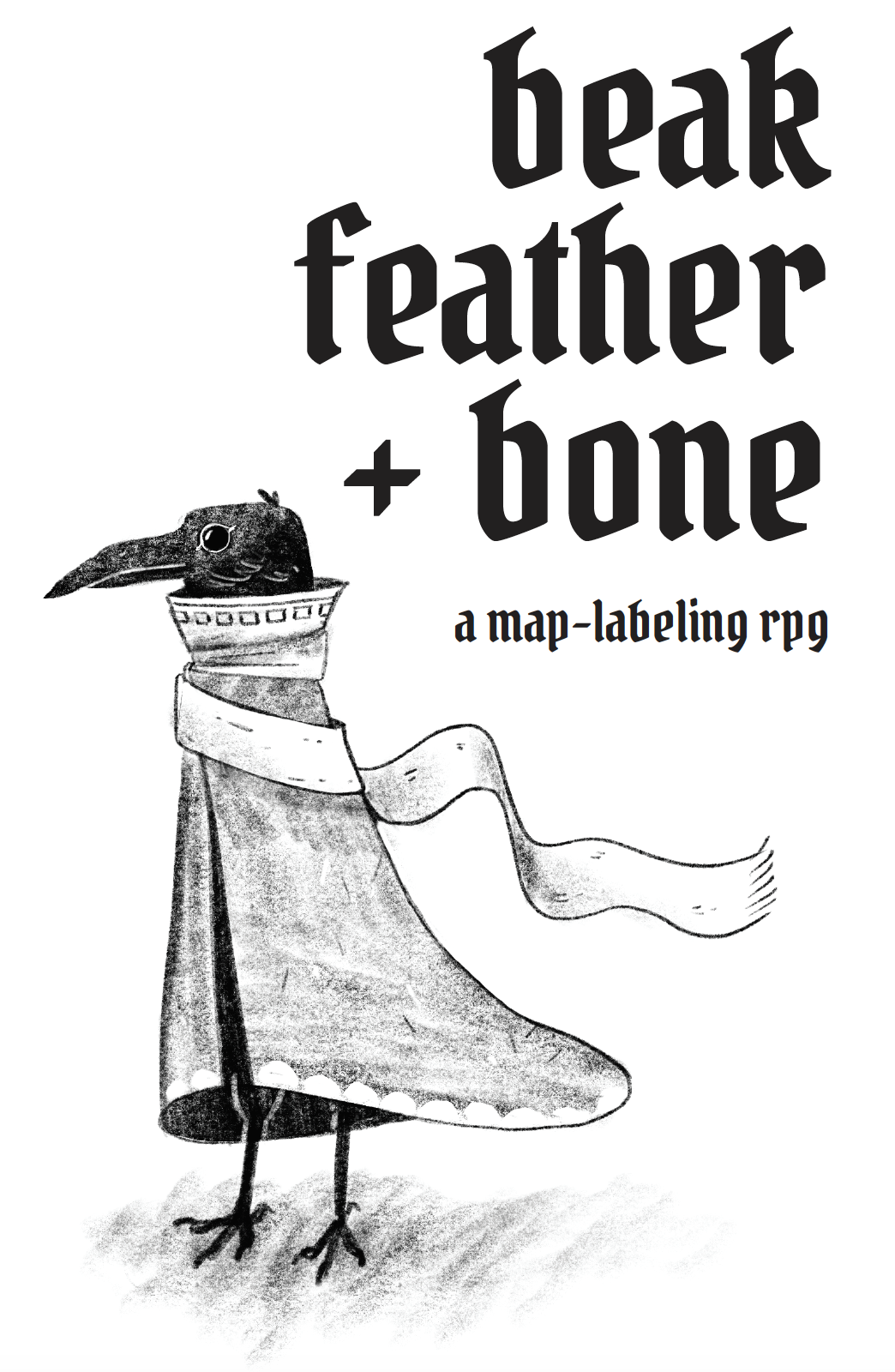Game Mechanics
In Beak, Feather & Bone players take turn claiming buildings on a map and describing their appearance, function, and significance towards a faction in the city. The players determine when the game ends, and at the end of the game, the winning faction (decided by total points drawn from cards each round) get to determine the appearance, function, and significance of the Seat of Power. The game is a tabletop RPG, with a pre-drawn map that players should print out. The mechanics were seamless with the theme of the game, which is to build a city of ravenfolk.

Map (provided by the game). The different colors signify different factions; the number signify the points earned by that faction with that building. Red box indicates the chosen Seat of Power.
Fun Realized
The game is very focused on bringing Narrative fun, as the main playing time is spent on generating descriptions for buildings. While the game can also bring Fellowship fun as players are able to work on building a city together, this aspect was not as emphasized as the game is playable for even 1 player. I played the game alone (taking turns as each faction), and while I did really enjoy the storytelling aspect, the game became somewhat repetitive as it felt like at every turn, I was simply writing down bits and pieces of a city that I have already designed. I think that with more players, the competition / conflict between different narratives would have made the storytelling mechanic more challenging. But it did work as a 1-person game, and I understand why it was advertised as such (perhaps tapping into the very small market of 1-player tabletop RPG?). It was also advertised as a map-making tool for larger RPGs (ala D&D), and while I didn’t experience first-hand how good it would be, I think the city one could eventually build would be very exciting for a larger RPG.
Look & Feel
As mentioned above, the main aesthetics of the game is Narrative. The game designers supported this by providing a lot of scaffolding inspiration. The boundaries of the game was very well-designed and drew the players in. First of all, the map was very aesthetic to look at (see above). At the beginning of the game, the game instructed me to look at the map to find a place I would determine as the Seat of Power (for more players, players would all have to agree on the Seat of Power location). I thought this gave me a lot of time to examine the map and have an idea of what I want to accomplish in my narrative (which building will become what place, etc.) The manual contains very aesthetic renderings of the different factions (below), which gives a lot of personality to the characters players would capture. This allowed the game to really dedicate its time to the fun it promises to the players: I got to start creating a city very quickly (rather than getting bogged down by character creation). I thought the focus on one specific setting (the ravenfolk town) was also quite smart because it helped establish a theme for the players. The pre-made characters and setting also provided some Fantasy fun, but I think most of the Fantasy fun came from the narrative I was building.

Some of the provided characters.
Business Model
Beak, Feather & Bone is a pay-upfront game. While there is probably a missed opportunity in not selling “expansion packs” of different settings (a city of foxes? for example), I think it works for the game because most of the fun comes from the mechanics itself, and not the story “dressing”.
Insights
Beak, Feather, & Bone is an example of a game that is very committed to one type of fun, Fantasy, (and perhaps Fantasy as a secondary one). Our social game incorporates multiple types of fun: Fantasy, Narrative, Fellowship, and Expression. A thought I had was potentially thinking of what our game would look like if we focus on only one type of fun. What if some of our mechanics that promote a type of fun is hindering another one?



